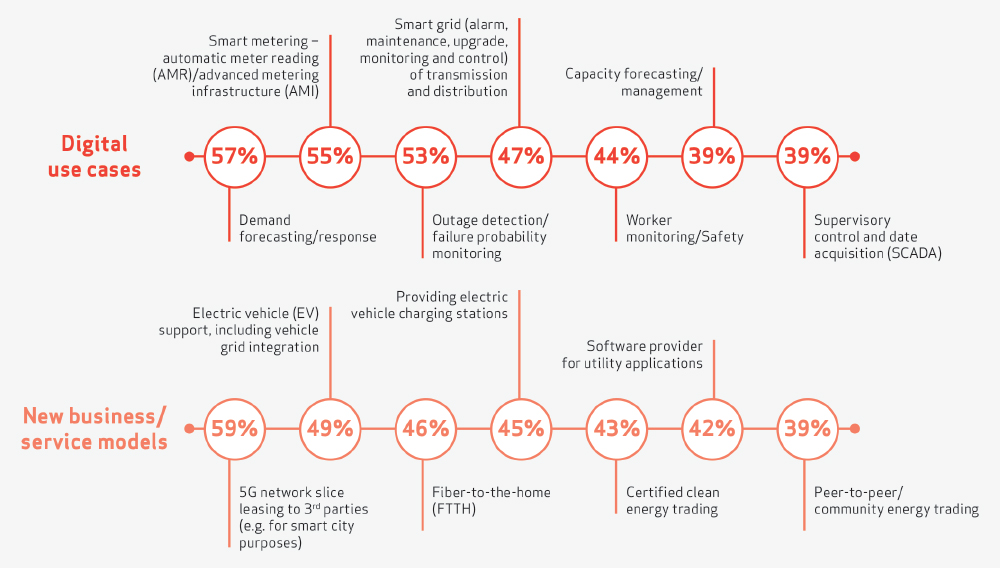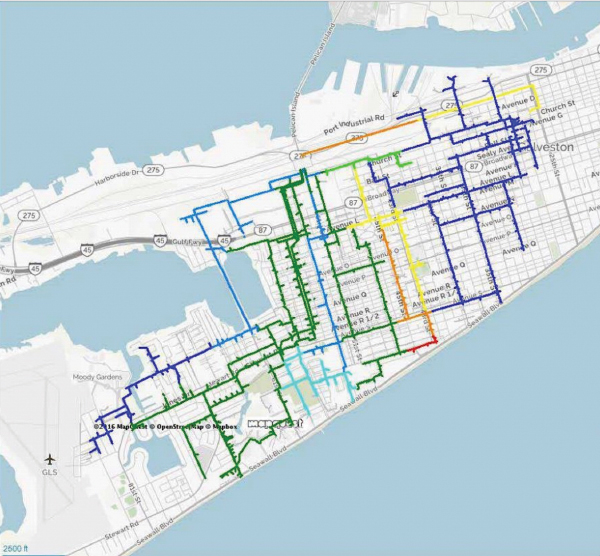Intelligent power and digitalization investments are essential to modernize energy delivery systems for a more electrified and low-carbon future. Utility performance today and tomorrow hinges on anticipating and preparing for this energy transition, as well as enabling a grid that can react far faster to changing conditions and dynamic energy sources.
We’re seeing utilities the world over making critical investments to affordably deliver reliable, safe service and facilitate the transition to more sustainable energy resources. Fossil fuel generation is being retired. Infrastructure is being built to support the rapid deployment of electric vehicle (EV) chargers. Energy resilience plans and actions are underway as extreme weather events occur with increasing frequency and impact. Customers are encouraged to participate in demand response programs. And new technologies are being applied every day to help reduce the cost of electricity.
All the while, the number of smart devices and the amount of data they produce are dramatically increasing. Utilities need their enterprise information technology (IT) systems to work harder and smarter to protect customers and the grid and deliver new and advanced functionality. Powerful utility-industry partnerships are yielding leading-edge approaches that better manage a far more dynamic grid.
Digital maturity is essential to a clean energy future
A new study carried out by 451 Research/S&P Global Market Intelligence, "The Intersection of Digital Trans-formation and the Energy Transition," examined the importance of factoring in the energy transition into digital transformation planning. The research included 1,001 respondents (including 250 utilities), who are involved in digital transformation efforts across four power-critical businesses–utility, building, data center and industrial markets–in North America, Europe and the Middle East.
In general, the research found that businesses need to move far faster on digital transformation to support their energy transition goals. There were three key takeaways for utilities:
- The utility sector is at a critical transition point–Utilities are faced with increasing electrical demand and aging infrastructure while maintaining service amid climate change and the energy transition.
- Utilities are choosing to view digital enablement and transformation through one of two lenses: (1) Digital progress is essential to meet today’s challenges and move the industry forward. (2) There are more pressing challenges that are slowing digital progress.
- Digital maturity will be even more important in the sector looking forward. Digital insights are being used today to optimize power generation, storage and delivery.
Utilities are reducing outages, becoming more predictive and enabling the clean energy transition through digital tools. The top utility sector digital use cases include demand response and forecasting (deployed by 57%), smart metering (55%), outage detection (53%), smart grid (47%) and capacity forecasting (39%).
On top of those operational improvements, utilities also see digital transformation as a path to new business models and revenue sources, including supporting customer electric vehicle (EV) charging needs (49%) or offering EV charging stations themselves (45%). Peer-to-peer energy trading (39%) and certified clean energy trading (43%) also offer utilities new digitally enabled ways of doing business.
For utilities, digital drives operational improvements, new business models

Q: Within your organization, which of the following digitally enabled use cases have you deployed today or plan to deploy in the next 12 months?
Q: Where do you see additional revenue or business models developing in the next five years?
Source: 451 Research and Eaton custom survey
Enterprise IT investments are crucial
As energy sources change and net demand for electricity evolves, utility and industry partners are delivering new tools that provide advanced functionality essential to support clean energy and electrification.
Capacity planning tools are streamlining renewable integration
Protecting the grid, minimizing impact and encouraging clean energy sources require quick, easy access to information about the grid’s capacity for additional distributed energy resources (DERs). Grid planning and modeling software automates the analysis required, significantly reducing the time and costs of integrating renewables on the grid–reducing complexity and advancing clean energy resources.
Tools that deliver fast, multi-constraint and model-based analysis are a must–helping perform accurate and efficient assessment of generation or load hosting capacity. They provide analysis for multiple system conditions to see if the current infrastructure can support added DERs.

Capacity planning tools that provide fast, multi-constrained and model-based analysis are helping reduce the time and costs of integrating renewables on the grid. Image credit: Eaton
Advanced distribution planning systems support non-wires alternatives
Automating complex calculations behind load relief projects is increasingly important to meet regulatory requirements and accelerate clean energy projects. How can utilities optimally site and size battery storage systems, dispatchable and non-dispatchable distributed generation? The engineering analysis and technical know-how needed are highly specialized and time-consuming.
Developed and fielded through industry-utility partnerships, advanced distribution planning software provides a centralized view into complex energy systems for prompt and accurate local action, helping maintain and improve grid performance. So, utilities can improve their capacity planning process and
- evaluate multiple scenarios of DERs and load forecast
- conduct hosting capacity analysis
- identify asset upgrades accommodating higher levels of DERs and load growth
- determine DER location and adoption into planning
Simply put, advanced distribution planning software is enabling utilities large and small to design and implement non-wires alternatives for load applications quickly and safely. The complex analysis can take just hours, rather than weeks or even months.
Analytics supporting clean energy investments
Clean energy investments require confirmation from utility planners. How do you know that utility planning models match reality? Utilities must verify that approval of DER interconnection is based on accurate models. Engineering model verification helps support sound decisions that will not impact the reliability or safety of operations.
Analytics can dramatically reduce the cost and time needed to ensure distribution planners use validated models by applying machine learning techniques to identify abnormalities. Data-driven analytics relies on secure connection and efficient data acquisition from all types of devices already deployed, regardless of manufacturer, using standard protocols. This is better achieved using secure gateways installed in the field that are capable of feeding both a real-time SCADA system and the data lake that supports analytics.
Smart EV charging devices helping advance demand management
Technology demonstrations are showing the potential for EVs to serve as a flexible load that can provide reliable grid services by combining smart home energy technology and centralized DER management.
Utilities anticipate new revenue potential from large-scale EV deployments. They can deploy smart EV charging systems to help reduce peak demand, shift loads to off-peak times and provide ancillary grid stabilization services. Further, smart charging can help utilities and customers alike by optimizing solar self-consumption, enabling peak demand shaving and energy arbitrage and charging EV batteries when rates are lowest.
Next up: OT system investments for local action
As decarbonization and electrification accelerate and extreme weather events increase, utilities need their IT systems to enable a grid that can manage far more complexity and data. Enterprise IT systems are helping automate crucial business processes with real field data. This will result in better utility planning and optimizing future grid operation.
Grid planning happens on a macro level; action must be local. While IT systems help improve the planning process, utilities also need modern operational technology (OT) systems to implement data acquisition and local control schemes at the substation, feeder and endpoint levels. These OT systems are increasingly connected to both real-time operations in utility control centers and for near real-time asset optimization–to react faster to changes in energy supply and demand. Finally, a closed-loop integration between planning and operation to eliminate information gaps can be achieved through a well-designed system architecture that integrates the IT and OT systems.

Dr. Thierry Godart is vice president and general manager of Eaton's global energy automation solutions business. He leads the teams at Eaton that develop and implement its Brightlayer digital solutions to help utilities.
He holds a Ph.D. in electrical engineering from Georgia Tech and a diplôme d’ingénieur from SUPELEC in Paris, France.








